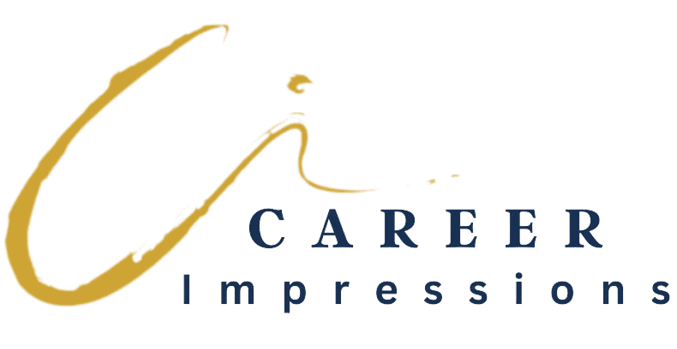
Executive Hiring in Slow-Motion: How Leaders Can Navigate a Sluggish Market
Executive hiring has slowed to its weakest levels in recent years. According to The Wall Street Journal, one in five U.S. companies plans to slow hiring in the second half of 2025, almost double the level seen last year. The Business Roundtable’s CEO Economic Outlook Index also dropped to its lowest since the pandemic, with 41 percent of CEOs expecting reduced employment over the next six months—up from 29 percent in the prior quarter. Executive search firm Thrive reported a 15% year-over-year decline in placements this past spring.
In short, the market is a lot more cautious. Boards and investors remain wary, decision cycles are lengthening, and top leadership positions are being filled more slowly. For executives in search mode, the environment demands patience, resilience, and, above all, strategy.
Why is Hiring Slower Right Now?
Economic and Policy Uncertainty
Boards dislike risk. With unsettled trade policies, tariffs, and tax structures in flux—and mixed forecasts for global growth—many organizations are pausing or slowing leadership hiring. It’s less about candidate quality than about risk mitigation.
Executive takeaway: Position yourself as the steady hand who thrives amid volatility, not as another cost liability.
Low Optimism and Cost Containment
CEO confidence has sharply declined. The Business Roundtable index fell 15 points in Q2 to 69 — the lowest since 2020. At the same time, Deloitte surveys indicate that two-thirds of CFOs have no plans to expand their headcount this year. Companies are playing defense, slowing investments, and focusing on efficiency.
Executive takeaway: Boards need leaders who can accomplish more with fewer resources. Emphasize your track record of cost discipline and operational rigor.
Talent Expectations vs. Market Reality
Some companies are chasing “unicorns”: leaders who can blend digital transformation, strategic vision, operational execution, and cultural leadership. But compensation hasn’t kept pace. This mismatch often stalls searches, with many executives expressing that recent offers are not as competitive.
Executive takeaway: Perfect fits are rare. Position yourself as the agile, high-impact executive who can adapt quickly and deliver results, even if you don’t tick every box.
Stagnant Job Market Dynamics
The broader labour market is a bit “frozen.” Job openings have stagnated, and quit rates remain unusually low, as reported by WSJ. Executives are staying put, creating fewer vacant seats and fewer mobility opportunities. Those who do move often see only modest pay increases of about 3–3.5 percent, according to Celarity’s 2025 State of the Job Market.
Executive takeaway: You’re competing in a smaller arena. Differentiation through measurable achievements and thought leadership is more critical than ever.
“No-Hire, No-Fire” Equilibrium and “Job Hugging”
Companies aren’t shrinking en masse, but they’re equally reluctant to hire. This “no-hire, no-fire” equilibrium stalls leadership refreshes. Korn Ferry adds another layer: a trend it calls “job hugging”. Many executives are clinging to current roles, often for stability in a volatile market or to avoid disruption from AI and restructuring. Fast Company notes that job hugging is partly why the U.S. quit rate is at its lowest since 2016, reducing turnover at the top.
Executive takeaway: With leadership seats occupied for more extended periods, fewer roles become available on the market. But this also creates openings for fractional, interim, or project-based leadership, where companies seek flexible talent without long-term commitments.
Strategic Playbook: How Executives Can Accelerate Their Search
Despite headwinds, executives can still move forward if they adapt. Here’s how:
1. Clarify Role Priorities and Build a Complete Communications Package
Executives need more than a resume in today’s sluggish hiring market. A standalone document, no matter how strong, won’t open doors on its own. What you need is a complete communications package that works together to tell a consistent, compelling story of your leadership value and is perfectly aligned with your target job goals.
Start with clarity: define three to five measurable impact areas where you move the needle: EBITDA gains, digital adoption, operational savings, or new market entries. These become the foundation of every message you deliver, across every platform.
Example: “Unlocked $7M EBITDA improvement in 18 months by restructuring North American operations.”
Then build the toolkit around those priorities:
-
Resume: Crisp, metrics-driven, and tailored for the roles you’re targeting. Lead with board-ready business cases that add value to the target job needs, not job duties.
-
LinkedIn Profile: Optimized for searchability and visibility, amplifying your brand with rich keywords, thought leadership, and a headline that reflects both function and impact.
-
Target Company List: A defined set of organizations that align with your expertise, values, and growth focus. This sharpens outreach and allows for customized positioning.
-
Networking Strategy: A plan to activate connections across executive recruiters, board members, industry influencers, and alumni networks. Proactive outreach, rather than passive applications, is where most opportunities emerge.
Together, this package communicates who you are, what you deliver, and where you want to go. It keeps your narrative consistent whether someone finds you through LinkedIn, meets you at a conference, or reviews your resume in a search process.
Executive takeaway: Prepare for the market. The leaders getting traction now are those who treat their candidacy like a full communications campaign where they are strategic, visible, and cohesive across every channel.
2. Leverage High-Impact Networks and Executive Search Firms
In a cautious market, many executive roles may not be posted. Instead, many are filled through trusted networks and search partners. The Times notes that recruiters are already warning of prolonged softness in white-collar hiring (source). This means your communications package must be designed to travel well: a resume that recruiters can champion, a LinkedIn profile that makes you easy to find, and tailored outreach emails that frame your value in the context of the recipient’s challenges. Just remember, recruiters work for companies and not job seekers. You can use them as part of your strategy, but do not lean on them alone.
Action: Draft a two-sentence positioning statement you can use in recruiter conversations and networking outreach. This should link your top achievements directly to the pain points organizations are facing now (cost pressures, transformation, efficiency).
Executive takeaway: Networking is not just casual coffee, but targeted, thoughtful, and meaningful communication. Engage and foster your network.
3. Pitch with Precision and Flexibility
Rigid role targeting can stall momentum. Instead, refine your messaging to show you’re open to potential fractional, interim, or advisory roles. Frame this in communications as: “I help organizations solve transformation challenges whether through interim, project-based, or full-time leadership.”
Consider updating your resume and LinkedIn profile with language like “Interim / Fractional Leadership Available” to signal readiness without diluting your long-term goals.
Executive takeaway: Flexibility doesn’t weaken your brand. It widens your runway.
4. Accelerate the Process with Proactive Communication
Hiring cycles are long. Don’t let conversations go cold. Keep momentum with strategic touchpoints:
-
Follow-up notes that reference industry trends.
-
A one-page 90-Day Value Roadmap shared post-interview.
-
LinkedIn articles or posts that reinforce your leadership expertise.
Consider these as more than follow-ups, but a part of your communications campaign. Every touchpoint keeps you top of mind and builds credibility.
Executive takeaway: In a slow market, silence is costly. Structured communication accelerates visibility.
5. Reassess Compensation Strategy Transparently
Compensation is a sensitive topic in today’s cost-focused environment. Executives who position themselves as flexible and creative communicators, willing to explore equity, performance-based incentives, or milestone bonuses, can signal more alignment with shareholder priorities. A recent KPMG survey found that 78% of companies now link executive compensation to performance metrics such as sustainability or financial milestones. Similarly, Sequoia and Carta report that while only a minority of firms currently tie equity to performance, interest in milestone-based pay structures is accelerating.
Your resume and LinkedIn should still highlight achievements in financial terms, but in conversations, communicate value before cost: “Here’s how I’ve unlocked $50M in efficiencies” rather than “Here’s the salary I require.”
Executive takeaway: Shift the conversation from what you cost to what you create.
6. Engage in Thought Leadership to Build Market Presence
Thought leadership is a communications strategy that pays dividends. Regular LinkedIn posts, guest articles, podcast appearances, and panel participation keep your expertise visible and searchable. Recruiters and boards increasingly look to visible leaders when shortlisting candidates.
Action: Align your thought leadership with your top three impact areas. If you specialize in digital adoption, publish perspectives on AI governance or transformation readiness.
Executive takeaway: Visibility creates credibility. Your digital footprint is part of your candidacy package.
7. Consider Cross-Sector or Geographic Flexibility
Not every sector is slowing. Hunt Scanlon reports that private equity, technology, healthcare, and financial services remain among the most active hiring markets for leadership talent, even as other industries scale back.
Demonstrating adaptability by reframing your narrative for adjacent industries or regional opportunities positions you as a versatile, high-impact executive.
Executive takeaway: Broaden your messaging beyond sector borders. Your leadership value often transcends industry silos, and companies in growth markets are actively seeking leaders who can confidently cross those lines.
8. Leverage the “Job Hugging” Environment
Korn Ferry calls today’s trend “job hugging”, where executives cling to current roles instead of moving. This keeps seats filled and opportunities scarce. The solution? Position yourself as the flexible alternative.
Update your resume and LinkedIn headline to include interim or project-based availability. Communicate in networking conversations: “I partner with organizations to lead transformations in interim, fractional, or full-time roles.”
Executive takeaway: Messaging around flexibility allows you to bypass frozen hiring pipelines and still land leadership opportunities.
The Bottom Line
Executive hiring in 2025 is defined by caution, not collapse. Decision cycles are longer, expectations are higher, and mobility is slower. But executives who adapt, framing their value with precision, building visibility, and embracing flexible leadership models, will outpace peers who are waiting on the sidelines. Remember that communication also creates momentum. The leaders who succeed now are those who act like brands, packaging their experience, messaging consistently across channels, and engaging the market proactively.
The lesson is clear: you can’t control the market, but you can control your strategy.
Do you need assistance creating your complete career communications package to compete more effectively?
